What are the signs of diabetes?
What are the signs of diabetes? 
Hello!
Diabetes mellitus is a chronic acute disease, in addition to the more acute onset of type 1, type 2 generally slow onset, difficult to estimate the time. The latter is often asymptomatic in the early stages of mild disease, but in severe disease and those with complications, the symptoms are obvious and more typical. The course of the disease is long, and the asymptomatic period is difficult to estimate, and it often takes years or even decades until symptoms appear or the diagnosis is confirmed clinically. Sometimes the disease may remain asymptomatic until serious complications such as cerebrovascular or cardiac conditions are recognized as having a diabetic basis shortly before clinical presentation. Since type 2 diabetes mellitus is the main population with diabetes mellitus, we will now focus on its clinical manifestations:
(i) Asymptomatic period
About 90% are middle-aged or older type 2 diabetic patients with good appetite, obese body, mental and physical strength as usual, often due to physical examination or examination of other diseases or pregnancy checkups incidentally found a small amount of postprandial diabetes. Fasting blood glucose is normal or slightly higher, but the 2-hour blood glucose peak after meals is more than normal, and the glucose tolerance test often shows diabetes. In many patients, common co-morbidities or complications such as hypertension, atherosclerosis, obesity and cardiovascular disease, hyperlipidemia or hyperlipoproteinemia, or the development of septic skin infections and urinary tract infections can be detected first. type 1 patients are sometimes easily detected because of obvious symptoms such as growth retardation, weakness, wasting or ketosis.
Patients often have pre-existing hyperinsulinemia during the asymptomatic phase of type 2 diabetes or when they are only in an abnormal glucose tolerance (IGT) state, whereas they often have positive islet cell antibodies (ICA) and glutamic acid decarboxylase (GAD) antibodies prior to the onset of symptoms of type 1 diabetes
The asymptomatic phase is actually preceded by a phase in which general tests, including glucose tolerance tests, are negative, but these subjects may have a family history of diabetes, a history of macrosomia, or associated metabolic syndromes, such as insulin resistance, hyperinsulinemia, hypertension, high LDLemia, and obesity, and are at high risk for diabetes mellitus
Asymptomatic diabetes can be more easily controlled by diet and/or exercise, preventing and minimizing chronic complications, and some patients do not need lifelong medication, even reversing
(ii) Symptomatic period
Patients in this stage often have symptoms of varying severity and are often accompanied by certain complications, co-morbidities or co-morbidities. Sometimes the symptoms of the disease are very mild, but the symptoms of co-morbidities or complications can be very severe and sometimes precede the symptoms of diabetes, or appear in the form of a major symptom that masks the symptoms of diabetes itself. For example, elderly patients often have coronary heart disease syndrome (angina pectoris, myocardial infarction, arrhythmia and heart failure), or cerebrovascular accident syndrome, but diabetes mellitus syndrome is very mild, so it is often overlooked or missed clinically. In middle-aged patients, the symptoms may be preceded by urinary tract infections, tuberculosis, skin boils, or certain surgical conditions such as cholecystitis and pancreatitis. In young patients, ketoacidosis may be the first symptom. If both fasting and postprandial blood glucose are significantly elevated, the following typical symptoms are usually present:
1. Polyuria, irritable thirst, excessive drinking
Due to diabetes, urine osmolality rises and tubular reabsorption of water decreases, urine volume often increases. Patients urinate frequently, more than one day and night can be more than 20 times, many times at night to get up, affecting sleep. Not only each time more urine and urine frequency, the total amount of urine a day is often more than 2-3 liters, occasionally up to more than 10 liters. Due to polyuria and water loss, the patient is thirsty, the amount of water and the number of times to drink more, can be proportional to the concentration of blood glucose and the amount of urine and loss of sugar; when the lack of insulin and ketoacidosis, sodium, potassium ions back to the absorption of the more difficult, polyuria is serious; often plasma concentration, affecting the osmolality, which can be brewed into a hypertonic coma and other serious consequences!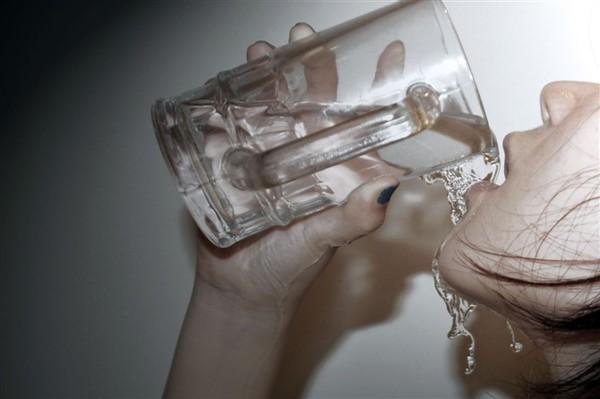

2. Hungry and hungry
Due to the loss of sugar, sugar is not fully utilized, accompanied by high blood sugar to stimulate insulin secretion, appetite is often hyperactive, easy to have a sense of hunger, the staple food is sometimes up to 1-2 pounds, more than double the dishes than normal people, can not be satisfied. However, sometimes the patient's appetite is suddenly reduced, then we should pay attention to whether there is infection, fever, acidosis, or has induced ketosis and other complications. Polyuria, polydipsia and polyphagia are often referred to as "three polydipsias".
3. Fatigue, weight loss, weakness
As a result of metabolic derangement, decreased energy utilization, negative nitrogen balance, loss of water and electrolytes, and worse in ketosis, patients feel fatigued and weak. Especially young (type 1) and severe (type 2) patients wasting significantly, weight loss can be up to dozens of pounds, the labor force is often weakened. The growth and development of young children with chronic disease is inhibited, with short stature, yellowish face, less shiny hair, and weak physical strength. However, patients with type 2 mild disease above middle age are often obese due to over-eating
4. Itchy skin
It is most common in the female pubic area, due to localized irritation by urinary sugar. Sometimes complicated by fungal vaginitis such as Candida albicans, itching is more serious, often accompanied by leukorrhea and other secretions. Dry skin after loss of water, can also occur generalized itching, but less common!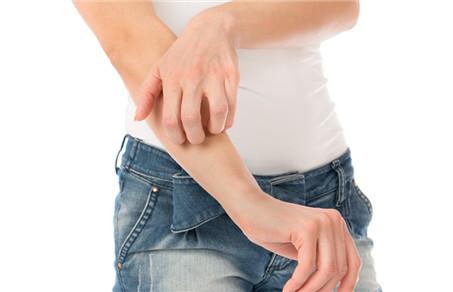
5. Other symptoms
There are limb pain, numbness, lumbago, loss of libido, impotence and sterility, menstrual disorders, constipation, and visual impairment. Sometimes there is persistent diarrhea, ranging from 2-3 times to 5-6 times a day, in the form of thin paste, usually non-inflammatory but functional diarrhea, which may be related to autonomic dysfunction. Sometimes there is upright hypotension, profuse sweating, incontinence, etc. is also a serious neurological manifestation, and many symptoms are due to complications and co-morbidities.
In early mild cases, most signs are absent. Long-term patients can often be found due to water loss, nutritional disorders and the emergence of a variety of signs. The liver may be enlarged, especially in type 1 patients, and may recover with appropriate treatment.
Although type 1 diabetes mellitus can develop in all age groups, it mostly occurs in children and adolescents, and the symptoms of "three more and one less" are often more obvious than those of type 2 diabetes mellitus. Early onset of the disease often have more obvious weight loss, and the rapid onset of the disease, often with ketosis tendency, so that ketoacidosis, clinical manifestations of loss of appetite, nausea, vomiting, headache, irritability, deep and fast respiration and urine output, and other symptoms, and even coma. The characteristic clinical manifestation is the smell of rotten apples in the breath (acetone odor).

Thanks to the subject for the invitation. Diabetes mellitus is a very common disease, and many people should not be unfamiliar with the term diabetes mellitus. In fact, for early diabetic patients, their symptoms may not be very significant, therefore, many patients in the clinic can not be detected early. Moreover, with the improvement of living conditions nowadays, more and more people suffer from diabetes, so each of us should pay special attention to the symptoms of diabetes.
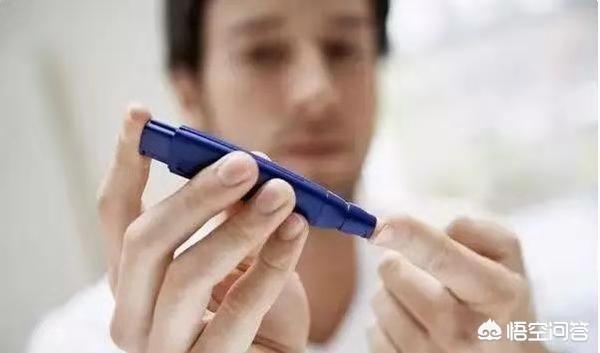
First of all, there is an increase in the frequency of urination, which is one of the early symptoms of diabetes. This is mainly due to the fact that when the body's blood sugar is too high to be fully digested and absorbed, the excess undigested blood sugar can only be excreted through increased urination. The patient may initially urinate more frequently at night and then urinate more frequently during the day. Secondly, the patient may experience thirst, which is one of the earlier symptoms. As mentioned earlier, when diabetic patients urinate more, they will naturally have less water in their bodies, and thus their bodies will signal their thirst, especially for those who did not drink a lot of water in the past. If they suddenly feel that they are drinking more water, they have to be vigilant about the possibility of increased blood glucose. Thirdly, the patient may lose weight in a short period of time, which may be accompanied by fatigue and back pain. Weight loss is mainly due to the fact that most of the patient's blood glucose cannot be absorbed and eliminated from the body, and the body can only maintain physical energy through increased consumption of fat and protein, thus weight loss will occur.

The above three symptoms are typical clinical manifestations of diabetic patients, in addition to this, patients will also have numbness of hands and feet, itchy skin, vision loss and recurrent infections.
Answer: Wang Can Practicing Physician
Welcome to Apricot Island for more health knowledge.
Two days ago, my aunt went to the hospital for a checkup because she had lost 20 pounds in the last month for no apparent reason, and found out that she was diabetic, with a fasting glucose of 13 mmol/L.In fact, that's how a lot of diabetics find out that they have the disease! There are also a portion of sugar addicts who discover it through an annual physical examination!
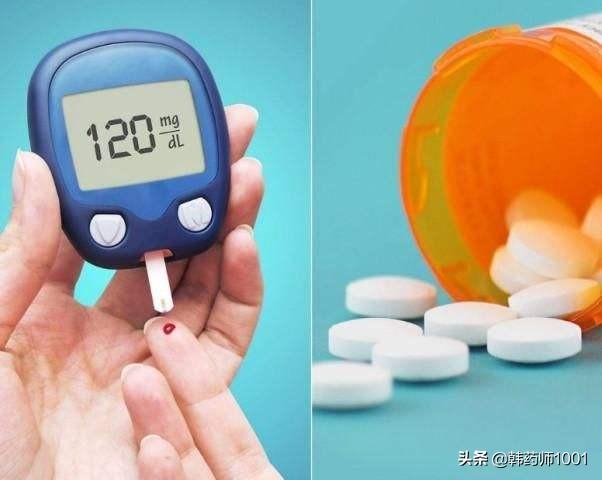
So what are the main clinical signs and symptoms of diabetes?
I. Diabetic patients are mainly characterized by"Dry mouth, excessive drinking and urination, weight loss."This is the main manifestation of the first diagnosis of diabetes (which can also occur with polyphagia), with no other specific discomfort.

Second, when blood sugar is high, especially higher than 20mmol/L, insulin can not participate in the conversion of carbohydrates in a timely manner, can not provide the body with sufficient energy, then the body will be a large number of decomposition of adipose tissue, and a short period of time the adipose tissue can not be fully utilized to decompose.Ketone bodies, an intermediate product of fat, then accumulate, eventually resulting in ketoacidosis or even a diabetic hyperosmolar state. Manifestations at this point may include.Anorexia, nausea, vomiting, acidosisetc.
Third, diabetic patients with impaired pancreatic islet function, not only the ability to secrete insulin is reduced, its ability to secrete glucagon is also weakened, so diabetic patients are more likely to experience hypoglycemia when they do not replenish carbohydrates in a timely manner. When blood glucose is low, there may be profuse sweating (about 1/2, cold sweat is more common), trembling (about 1/3), blurred vision, hunger, weakness (about 1/4-1/3), as well as nervousness, pallor, palpitations, nausea and vomiting, and cold extremities.

Fourth, when with the prolongation of the course of diabetes mellitus, especially patients with poor blood glucose control, they may also develop diabetic retinopathy, which manifests itself as decreased visual acuity, blurred visual field, etc., diabetic peripheral neuropathy and diabetic dermatosis, which manifests itself as itching and a burst of tingling in the skin. Therefore, we should control blood glucose strictly to delay the occurrence of complications.
There are five other things that people with diabetes should be aware of in their lives!
I. How to eat right?

We can refer to the chart above to choose the ingredients thatAvoid foods rich in monosaccharides and disaccharidesThe food is rich in starch and fast digesting, such as honey, pastries, brown sugar, white sugar, avoid drinking diluted rice and other foods rich in starch and fast digesting, it is advisable to eat more cabbage, spinach, cucumber, these low sugar content, rich in dietary fiber food.Eat at least three times a day, each meal is best with a combination of staple foods and coarse grains.The ratio of refined and coarse grains is 6:4, advocating more dry and less dilute, less fried food, in the case of blood glucose control can be appropriate to eat fruits, and should be placed in the middle of the two meals to eat, you can avoid significant fluctuations in blood glucose.
Second, how to exercise correctly?
Try to exercise should choose fast walking, jogging, swimming and other aerobic exercise, exercise until you feel the body heat, sweat, but not sweating profusely, theIt is recommended to start exercising 1-2 hours after meals, 30-60 minutes each time, and at least 150 minutes of aerobic exercise per week.. Sugary/starchy foods that can be eaten immediately should be available during exercise to prevent hypoglycemic events.

(iii) Diabetes patient education!
Diabetes is a chronic disease and we need to be consistent in our diet, exercise and medication! Diabetes patient education not only raises our awareness of our disease and updates our concept of treatment, but also reminds us not to relax our management! It is only through persistence that we can get the maximum benefit!
IV. Regular blood glucose monitoring!
The most direct purpose of treating diabetes is to reach the blood glucose standard, how can we assess the blood glucose level accurately and timely? That can only be blood glucose monitoring, regular blood glucose monitoring can help us to adjust the treatment program, in order to choose the most suitable medication and appropriate dosage for us!
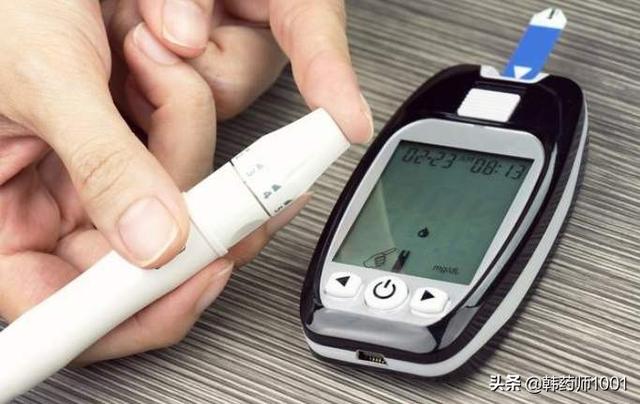
V. Medication!
There are many medications available for the treatment of diabetes, such as metformin, the cornerstone of type 2 diabetes treatment, glimepiride and repaglinide, insulin sensitizers rosiglitazone, liraglutide, a GLP-1 receptor agonist, rilagliptin, a dipeptidyl peptidase-4 inhibitor, dalgliflozin, an SGLT-2 inhibitor, as well as a variety of insulin, and so on! So there are a lot of glucose-lowering medications to choose from, and which one is best for you? That's a choice that needs to be made by a medical professional after an assessment based on the individual's condition!
Purely handwritten, I hope my answer was helpful! If you think the writing is okay, please like and follow!
The early stages of diabetes usually do not appear particularly obvious symptoms, so you should pay extra attention to your body to appear the following "signs":
Thirst:Thirst is the first symptom of diabetes. When blood sugar is too high and cannot be digested and absorbed by the body, it can only be excreted through urine. When you urinate too much, your body will naturally signal that you are thirsty and dehydrated. In the past, people who do not like to drink water, suddenly become non-stop drinking, then we should suspect that it is not diabetes.
Increased frequency of urination:Drinking and urinating more often go hand in hand. People with diabetes usually start with an increase in nocturnal urination, from one to two to three times, and then progress to non-stop trips to the bathroom even during the day.
Rapid wasting in a short period of time:The original large size of the person suddenly lost weight for no reason, accompanied by fatigue and weakness, back pain, most likely caused by high blood sugar. Diabetic patients lose weight because blood sugar is excreted through the urine, the body does not have enough energy, so it has to consume fat and protein to maintain operation. Excessive consumption of fat and protein naturally leads to weight loss.
Numbness in hands and feet:Some people with diabetes experience symptoms such as numbness in the limbs, decreased sensation, and walking like stepping on cotton. This is due to poor blood flow caused by high blood sugar in the blood, which cannot reach the limbs, especially the feet.
Itchy skin:There are many reasons why people with diabetes experience itchy skin, it can be caused by dehydration and dry skin, or it can be caused by high blood sugar in the body, which irritates the skin.
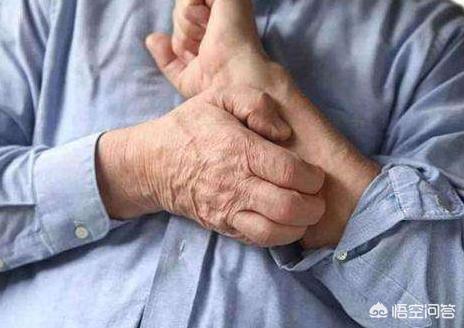
In addition to the above symptoms, recurrent infections, pus overflowing from tooth sockets, sudden vision loss, and sexual dysfunction can be signs of diabetes.
Of course, the diagnosis of diabetes mellitus, in addition to the clinical symptoms mentioned above, should also be combined with the specific conditions of the patient, such as the age of more than 40 years old, heavier friends recently appeared to drink more and urinate more, is of course more likely to be diabetes mellitus.
Below, "ask the doctor" to introduce you to the high-risk groups of diabetes are:
There is a family history of diabetes.
Age over 40.
High blood pressure, high blood cholesterol.
Women with polycystic ovary syndrome.
Women with a history of macrosomic births or gestational diabetes.
Irregular diet and excessive carbohydrate intake.Carbohydrates are an important raw material for synthesizing blood sugar. Excessive carbohydrate intake can lead directly to blood sugar overload, setting the stage for diabetes.
Like to drink milk tea, carbonated drinks. Milk tea has a large amount of trans fatty acids, carbonated drinks are extremely high in sugar, long-term consumption will increase the risk of developing type 2 diabetes.

Often stay up late, mental stress or even long-term treatment with antipsychotics or antidepressants. Emotions affect the endocrine system. Stress and long-term unresolved as well as some antidepressant drugs can lead to increased blood sugar. Sedentary, lack of exercise.
Smokers.
If you experience the previously mentioned symptoms and are at high risk for diabetes, it is recommended that you check your fasting blood sugar and take a glucose tolerance test with the hospital as soon as possible.
The above content is edited and organized by "ask the doctor" for you, want to know more authoritative health knowledge, welcome to pay attention to us!
The typical symptoms of diabetes mellitus are "three more and one less", i.e., more drinking, more eating, more urination, and weight loss. When blood glucose rises in diabetic patients, it exceeds the renal glucose threshold, causing osmotic diuresis and polyuria, and polyuria increases the loss of water in the body, causing thirst and drinking. As blood sugar can not be effectively used by the tissues and organs, so that the tissues and organs are in a "starvation" state, the body sends out signals to eat, and the body mobilizes fat, protein increase, resulting in overeating, weight loss, and so on.
In addition, diabetic patients will also have symptoms such as dizziness, panic, hunger and other manifestations of hypoglycemia, abnormal sweating (more sweating on the face and body, less sweating on the lower body), dry and itchy skin, itching of the vulva in women, difficulty in urination, urinary incontinence, fatigue, weakness, loss of vision, wounds that are not easy to heal, and postural hypotension.
Diabetics should be careful with their diet:
1. Diversify your diet, eat staples, vegetables, fruits, meat, eggs, milk, soy products, etc., more than 12 kinds of food a day and more than 25 kinds a week. Don't overeat, you can have small and frequent meals.
2. Control the total intake of the day. Sweets, fried foods, pickled foods, smoked foods should be eaten less or not eat, so as not to cause blood sugar, blood fat, blood pressure rise, aggravate the condition.
3, eat more fresh vegetables, such as spinach, celery, cabbage, broccoli, cucumber, tomatoes, fungus, kelp, purple cabbage, cauliflower and so on. Vegetables can be supplemented with rich dietary fiber, which has the effect of lowering blood sugar and reducing fat absorption.
4, do not eat doughnuts, oil cakes, biscuits, fried cake and other oil-containing staple foods, millet, oats, corn, brown rice and other coarse grains to replace part of the fine grains, pay attention to coarse and fine mix.
5. Drink plenty of water, 6-8 glasses of water a day, about 1500-2000 milliliters.
Diabetes Symptom 1: Weight Gain
We all know that there is generally a positive relationship between the body's food intake and weight. Unless you have a dramatic increase in exercise, you will only eat more and weigh more.
If you have been losing weight in recent times without changing the amount of food you eat or increasing the amount of exercise you do, this could be a precursor to diabetes.
This is because none of the cells in a diabetic's body are able to absorb the glucose that is digested through the stomach, so the person becomes thin.
Diabetes Symptom 2: Vision Loss
It has been recognized by many experts that diabetes can have a negative impact on human vision.
Once the glucose level in the blood surges, it will make the eyeballs skewed, and the light entering the eyes further zigzagging, the direct symptom manifestation is that the eyesight is substantially backward, may originally have 5.1, 5.2, now only 4 points or so, then do not take it as a common vision loss, and check the blood sugar in time.
Diabetes Symptom #3: Wounds that have been difficult to heal
We know that the human body has a self-healing function, if it is only some small wounds, through the body's self-healing will be good by itself.
For example, if you accidentally cut your fingertip with a pocketknife, you don't even need to go to the hospital site for professional treatment, you just need to decontaminate it with alcohol and put a band-aid on it.
However, high blood sugar will directly hinder the blood flow, so that the body's metabolic process becomes slower, so it is difficult for diabetic wounds to heal in a short period of time.
Diabetes Symptom 4: Frequent Night Risings
Of course, this symptom is not always diabetes, to exclude women in the second trimester of pregnancy from the type of diabetes. We know that it's normal for women to go to the bathroom more often in the second trimester because their stomachs are getting bigger and bigger and squeezing the urethra.
If these causes are ruled out, then the blood sugar in the body may be too high.
Because blood sugar is so high, the body is trying to get more of the excess sugar out of the body so that frequent urination occurs.
Warm reminder: If the above 4 symptoms persist, they must not be ignored, and you should go to the hospital at the first time to have a checkup and monitor your blood sugar in order to stop the progression of the disease.
[Answered 2018-05-31 by Chinese Medical Science]As the question, thanks, to answer this question, you need to know about hypoglycemia, it is said that high blood sugar is not good, in fact, hypoglycemia is more harmful. Hypoglycemia is most harmful in young people and older adults.

Hypoglycemia is a common adverse reaction in the treatment of diabetes mellitus, and severe hypoglycemia can induce serious cardiovascular and cerebrovascular events, even life-threatening. Especially in the elderly, the onset of hypoglycemia is extremely insidious and can easily develop into severe hypoglycemia and even cause death.
What are the common causes of severe hypoglycemia in elderly patients with diabetes? Elderly patients with diabetes mellitus have gradually reduced physiological functions, adrenaline, glucagon, growth hormone, adrenocorticotropic hormone and other resistance to hypoglycemic response to glucose hormone release is reduced, when blood glucose is lowered, especially when blood glucose is chronically lowered can not timely and effective regulation of the blood glucose level and lead to hypoglycemia, elderly diabetes mellitus patients are generally longer course of the disease, most often associated with diabetic neuropathy, autonomic nerve function is low The activity of sympathetic nervous system is not well stimulated when blood glucose is lowered, so it is easy to have hypoglycemia without sensation. Elderly people with liver and kidney function gradually decline, drug metabolism is slow, easy to accumulate in the body, while elderly diabetic patients are often accompanied by diabetic nephropathy, glucose-lowering drugs clearance and metabolism is slow, and often the regular dose of hypoglycemia is easy to occur. Elderly people generally more chronic diseases, eating significantly reduced, often due to the inability to timely reduce the oral hypoglycemic drugs and insulin dose and hypoglycemia.
How to avoid hypoglycemia and its dangers? The best way is to monitor blood glucose regularly and adjust medication according to diet and blood glucose level. For example, if elderly people sometimes eat less or forget to take medication, they should monitor their blood glucose and decide whether to supplement medication or not. Another way is to always have some small foods with high sugar content around, so that they can be replenished in case of hypoglycemia to avoid serious adverse reactions when blood sugar is too low.
Hope you can help, welcome to pay attention to the "Chinese medical science platform" headlines, to get more professional and original medical science knowledge, this article for the original content, image source network, unauthorized refused to reproduce.As a family member of a diabetic, I would like to answer this question briefly.
Hubby is a type 2 diabetic and his main symptoms are.
1. Large meals (especially hungry, looking for something to eat when they have time)
2. Drinking a lot of water
3. Frequent urination as well
4. Easy to sweat, dry or not work with a towel to wipe sweat, feel especially hot, like to eat cold things.
5. They are also easily fatigued and are very lazy and unwilling to exercise.
Normally, to control his blood sugar, I become the family doctor, and in addition to testing his blood sugar, I have to supervise the taking of metformin extended-release tablets, as well as controlling his diet, and taking him out for walks with me.
In western medical diagnostics, the typical symptoms of diabetes mellitus are often described as "three more and one less syndrome". That is: eating more, drinking more, urinating more, and losing weight.
But in fact, in the clinic, there is a large part of the diabetes patients do not have obvious three more than one less symptoms, and this part of the body is more inclined to obesity, the body heat is significantly higher than normal, in the early stage of the disease, the body does not have too obvious discomfort. But after the disease reaches the middle, the body will appear weakness, tiredness, hot flashes, panic, shortness of breath and other symptoms. This type of people is often due to over-nutrition, insufficient exercise, and ultimately the formation of the "three highs" body, so that the pancreatic secretion function is abnormal and lead to.
Once diabetes reaches the middle and late stages, a variety of complications can occur. The most common are problems with blood supply to the heart and brain, vision loss, peripheral nerve disease, peripheral circulatory disorders, as well as digestive disorders, immune deficiency, and so on.
Therefore, early detection, early intervention and treatment of diabetes are very necessary. Proper diet, moderate exercise and regular medical checkups are the most effective means of preventing diabetes.

I'm Dr. Liu, a medical scientist, spreading medical knowledge and making everyone their own doctor!
The basic clinical manifestations of diabetes are as follows:
1. Elevated blood glucose caused by osmotic diuresispolyuriaand thenhave excessive thirst and drinking。
2. Peripheral tissues have impaired utilization of glucose, increased lipolysis, negative balance of protein metabolism, and gradual seeWeakness, emaciationChild growtharrested developmentPatients often haveEasily hungry and overeatenTherefore, the clinical manifestations of diabetes are often described as Therefore, the clinical presentation of diabetes is often described as "more than three, less than one", i.e.Polyuria, polydipsia, polyphagia and weight loss。
3. May havepruritusIn particularvulva。
4, blood glucose rise faster can make the ocular aqueous humor, lens osmotic pressure changes and cause refractive changes caused by theblur。
5. Many patients do not have any symptoms, and high blood glucose is only found during health checkups or laboratory tests for various diseases.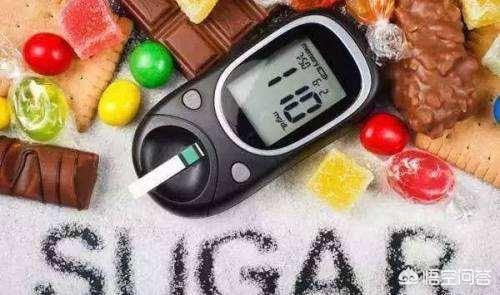
Summary: At present, many patients in the clinic are admitted to the hospital routine examination of diabetes mellitus for the first time, clinical symptoms are not typical, diabetes mellitus is not scary, the key is to do a good job of comprehensive management of diabetes mellitus, to reduce the delay in the occurrence of long-term complications. Finally, please remember the following five points (known as the "five carriages"): diabetes education, medical nutrition therapy, exercise therapy, blood glucose monitoring and drug therapy.
This question and answer are from the site users, does not represent the position of the site, such as infringement, please contact the administrator to delete.